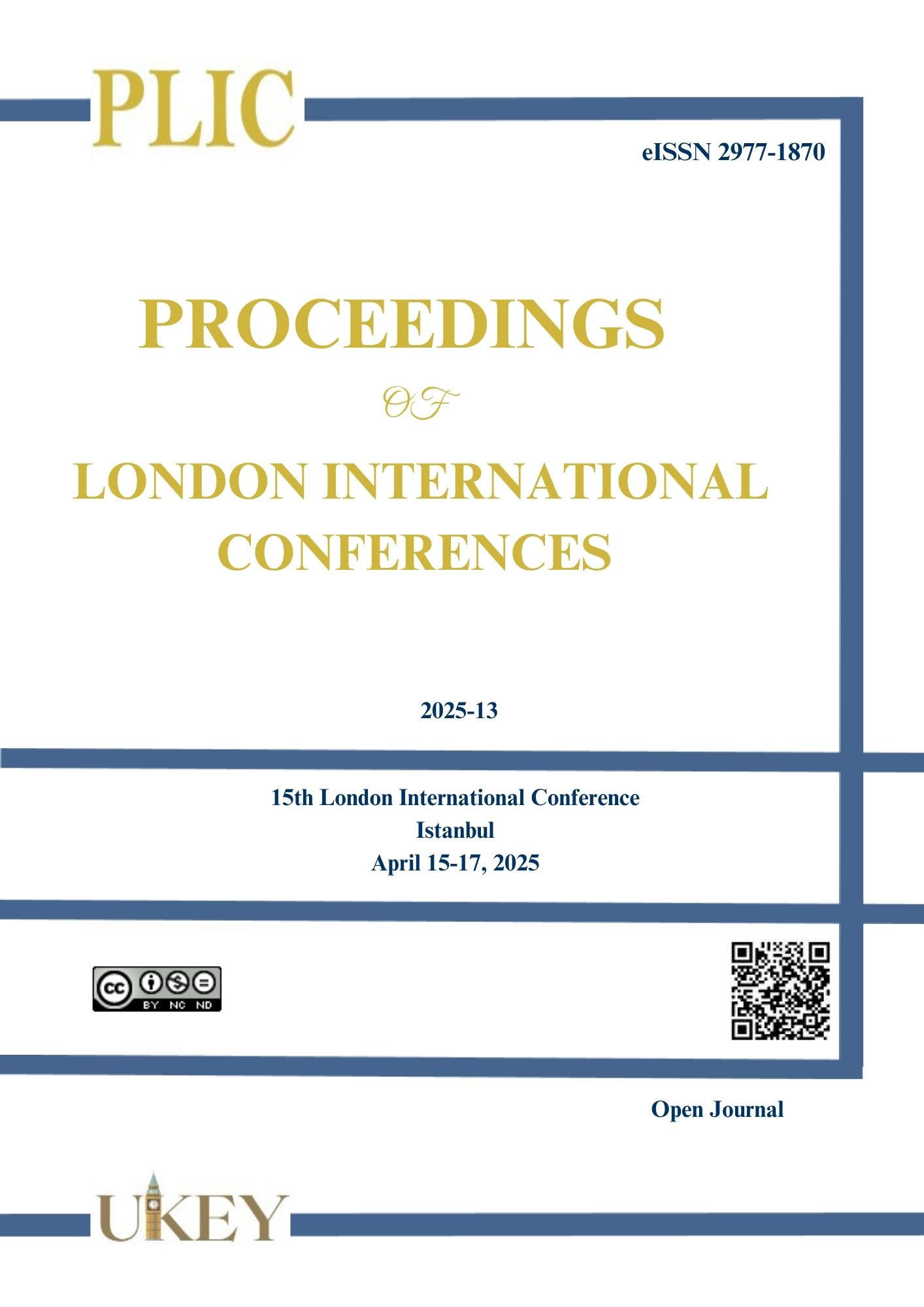Strategies of transnational companies in the technological sector
DOI:
https://doi.org/10.31039/plic.2025.13.327Keywords:
Technological sector, innovations, transnational corporation, research and developmentAbstract
Purpose. This study examines transnational corporations in the technological sector. Transnational companies minimize costs by transferring R&D results to affiliates and maximize profits.
Design. This study lists the benefits and drawbacks of the fundamental business methods used by multinational corporations. Analysis was based on R&D data, the cutting-edge technology application, and the dissemination of new management organizational forms. A model for developing a strategy for transnational companies to promote innovative products was considered.
Findings. The ability of transnational corporations to use a flexible mechanism of investment activity and organizational methods analyzed in global economic change. Artificial intelligence, digital technology, and digital platforms were also identified. The key factors for achieving technological leadership in transnational corporations through global production systems are grounded.
Originality. The proposed decision-making model illustrates the author’s approach to monitoring and assessing the effectiveness of the TNCs' selected innovation strategies. A transnational business strategy combines elements and features of innovation strategies. The use of innovative strategies stimulates technological development and increases competitiveness.
References
Ang, C. (2020). Ranked The 50 Most Innovative Companies. 17 July. 2020. https://www.visualcapitalist.com/top-50-most-innovative-companies-2020
Billionaires Lose a Combined $208 Billion on the First Day of Trump’s Tariffs (2025). Bloomberg reports, April 3. https://www.bloomberg.com/news/articles/2025-04-03/stock-market-drop-erases-208-billion-from-bezos-zuckerberg-other-billionaires?embedded-checkout=true
Bunz, B. (2024).The 25 Most Innovative Companies of 2024.” (2024). R&D World. November 19. URL: https://www.rdworldonline.com/the-25-most-innovative-companies-of-2024
Diaconu, L. (2012). Business Strategies of the Multinational Corporations, CES Working Papers, ISSN 2067-7693, Alexandru Ioan Cuza University of Iasi, Centre for European Studies, Iasi, Vol. 4, Is. 2, 141-151.
Dirk Willem the Velde (2002). Government Policies for Inward Foreign Direct Investment in Developing Countries: Implications for Human Capital. Formation and Income Inequality. Working Paper No. 193. OECD Development Centre.
Economic Survey (2020). https://economictimes.indiatimes.com/tech/technology/fdi-in-technology-sector-saw-a-336-rise-in-apr-sep-2020-economic-survey/articleshow/80586966.cms?utm_source=contentofinterest&utm_medium=text&utm_campaign=cppst
Eurostat Statistics. (2021). https://ec.europa.eu/eurostat/data/database
Jorubova, F. (2020). Analysis of the Influence of TNCs on the Economy of Developing Countries and Countries with Economies in Transition, Review Business and Economic Studies, Vol. 8, No. 3, 34-62, doi: 10.26794/2308–944X-2020–8–2-34-62
Kathuria V. (2000). Productivity spillovers from technology transfer to Indian manufacturing firms, Journal of International Development, April, No 2(3), pp. 343 – 369.
Kryvovyazuk, I., Kovalska, L., Savosch, L., Pavliuk, L., Kaminska, I., Baula, O., Zavadska, O. (2019). Strategic Decision and Transnational Corporation Efficiency, Academy of Strategic Management Journal, Vol. 18, Issue 6. https://www.abacademies.org/articles/strategic-decision-and-transnational-corporation-efficiency-8844.html
Liao, F. H., & Wei, Y. H. D. (2013). TNCs’ Technology Linkages with Domestic Firms: An Investigation of the Ict Industry in Suzhou, China. Environment and Planning C: Government and Policy, 31(3), 460–474. https://doi.org/10.1068/c11223b
Leifer, R., Colarelli, G., Rice, M., Colarelli O’Connoer (2001). Implementing Radical Innovation in Mature Firms: The Role of Hubs. The Academy of Management Executive, Vol.15, No.13, 102-113. https://www.jstor.org/stable/4165764
Melnik T., Kudurko L., Samsonova L. (2019). Contractual Relations in the New Economic Competition Strategies of TNCs. Baltic Journal of Economic Studies, vol. 5, No 3.
Mierzejewska, W. (2018). Innovative Performance of Transnational Corporations. Journal of Management and Financial Sciences. Volume XI, Issue 31, March. 69–83.
Nosova, O. (2021). Effects of Foreign Direct Investment on Labour Productivity.” In the book “Productivity of Contemporary Economics. Theory and Evidence.”Eds. O.M. Moskalenko, A.S. Filipenko, Y.K. Zaitsev. Cambridge Scholar Publishing. Chapter 7.
Nosova O. & Lypov V. (2021).Transforming Competitiveness by Introducing Digital Platforms.” The Journal of World Economy: Transformations & Transitions. No. 3, 1-14. DOI: https://doi.org/10.52459/jowett13111221
Nosova, O. (2021a). Foreign Direct Investment of TNCs as a Factor of Innovation Development. Bulletin of V. N. Karazin Kharkiv National University Economic Series, (100), 45-56. https://doi.org/10.26565/2311-2379-2021-100-05
Osano, H.M., Koine, P.W. (2016). Role of Foreign Direct Investment on Technology Transfer and Economic Growth in Kenya: a case of the energy sector, Journal of Innovation and Entrepreneurship, Vol. 5, Issue 1, 1-25. DOI: 10.1186/s13731-016-0059-
Overcoming the Innovation Readiness Gap. Most Innovative Companies 2021. (2021). BGC. April, available at, https://www.bcg.com/publications/2021/most-innovative-companies-overview
Paul, S. (1979). Transnational Corporations and Developing Countries: Some Issues in Industrial Policy. Economic and Political Weekly. Vol. 14, No. 30/32, Special Number (August), 1315--1330
Radosevic, S. (1995). Science and technology capabilities in economies in transition: effects and prospects. Economics of Transition, December, Volume 3, No 4, 472.
The Global Innovation 1000 Study. Investigating trends at the world’s largest corporate R&D spenders. (2018), available at, https://www.strategyand.pwc.com/gx/en/insights/innovation1000.html
The Challenger Report. (2025). March. Released 3 April. Gray & Christmas, Inc.
The 2024 EU Industrial R&D Investment Scoreboard, 2024. At, https://iri.jrc.ec.europa.eu/scoreboard/2024-eu-industrial-rd-investment-scoreboard
UNCTAD. (2020 a.) Investment Trends Monitor. Impact of the Coronavirus outbreak on global FDI. 2020, United Nations, New York, and Geneva, accessed March 2020, available at, https://unctad.org/system/files/information document/diae_gitm34_coronavirus_8march2020.pdf.
UNCTAD. (2020 b.) World Investment Report: “International Production Beyond the Pandemic,” United Nations, New York, and Geneva, accessed June 2020, available at, https://unctad.org/system/files/official-document/wir2020_en.pdf.
UNCTAD. (2020 c). Trade and development report 2020 from global pandemic to Prosperity for all: avoiding another lost decade. United Nations, New York, and Geneva accessed June 2020.
UNCTAD. (2024). Investment Facilitation and Digital Government. United Nations, New York, and Geneva accessed 20 June 2024.
Vang, J. & Ashein, B. (2006). Regions, Absorptive Capacity and Strategic Coupling with High-Tech TNCs: Lessons from India and China Science, Technology & Society. SAGE Publications. New Delhi/Thousand Oaks/London. DOI: 10.1177/097172180501100103
Zobov, A., Starostin V., Degtetreva, E., Chernova, V. (2016 ). Innovative Strategies of Transnational Companies and Synergy Effect of Technologisation. Indian Journal of Science and Technology, 9(39), October. DOI: 10.17485/ijst/2016/v9i39/96521
Zorska, A. (2013). Knowledge Development and Transfer in Foreign Subsidiaries and Their Parent Transnational Corporations. International Journal of Management and Economics, 40, January. DOI:10.2478/ijme-2014-0026
Downloads
Published
How to Cite
Issue
Section
License
Copyright (c) 2025 Olga Nosova

This work is licensed under a Creative Commons Attribution-NonCommercial-NoDerivatives 4.0 International License.
You are free to:
Share: copy and redistribute the material in any medium or format. The licensor cannot revoke these freedoms as long as you follow the license terms. Under the following terms: Attribution-NonCommercial-NoDerivatives-No additional restrictions.
Authors retain copyright and agree to license their articles with a Creative Commons Attribution-NonCommercial-

